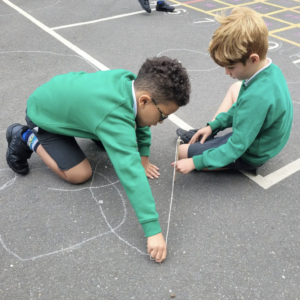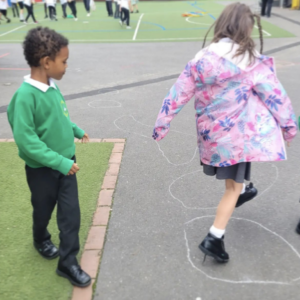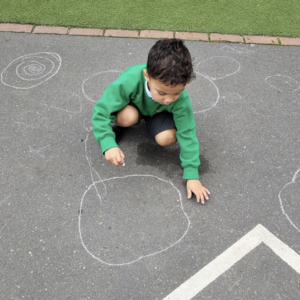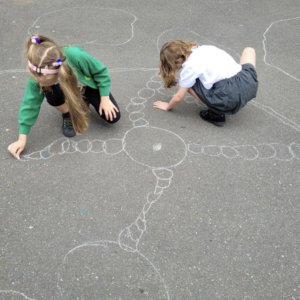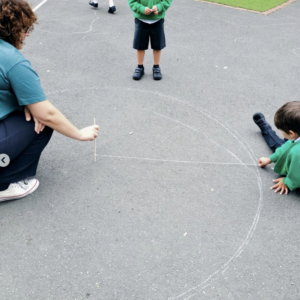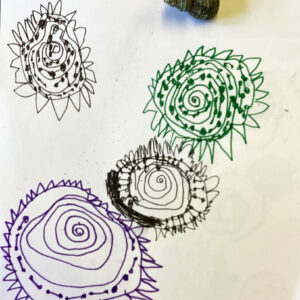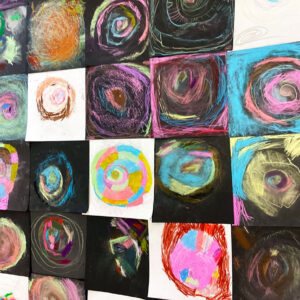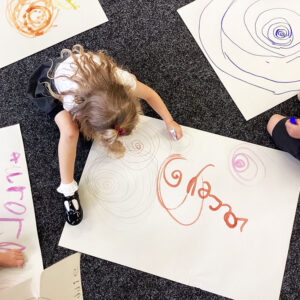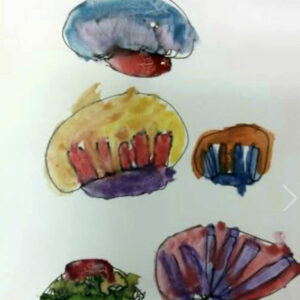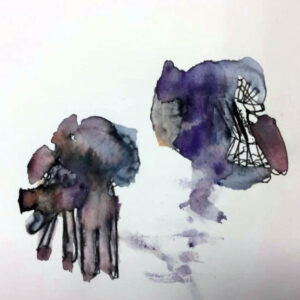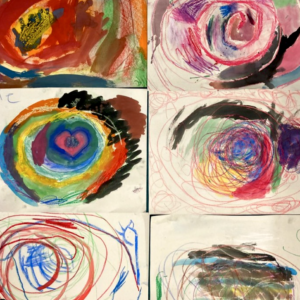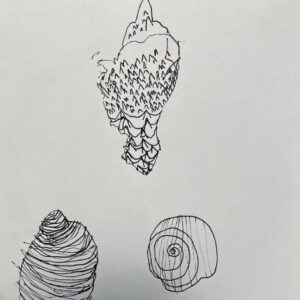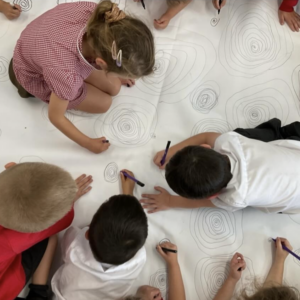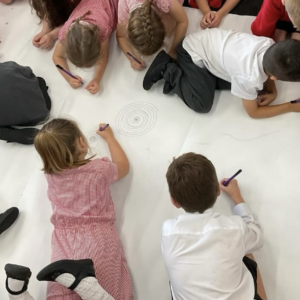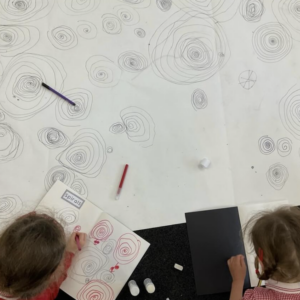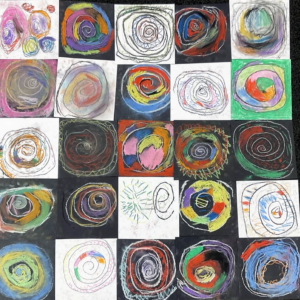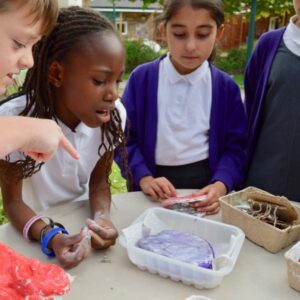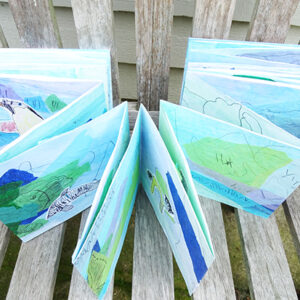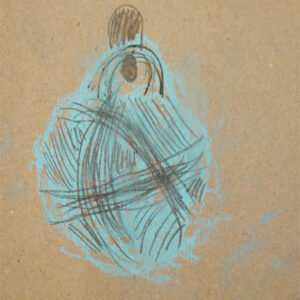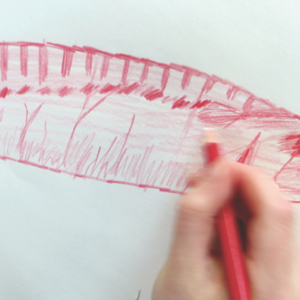Pathway: Spirals
Pathway for Years 1 & 2
Disciplines:
Drawing, Collage, Sketchbooks
Key Concepts:
-
That drawing is a physical and emotional activity. That when we draw, we can move our whole body.
-
That we can control the lines we make by being aware of how we hold a drawing tool, how much pressure we apply, and how fast or slow we move.
-
That we can draw from observation or imagination.
-
That we can use colour to help our drawings engage others.
In this pathway children are enabled to build an understanding about the way they can make marks on a drawing surface. They explore how the way they hold a drawing tool, and move their bodies, will affect the drawings they make.
Children will begin to explore mark-making and experiment with how they can use the marks they make in their drawings.
They are introduced to the fact that they can make drawings as a result of observation, without a seen subject matter. (i.e. from action or imagination) and that they can make drawings as a result of observation. Through their drawings children are able to talk about what they can see and how it makes them feel.
The focus of the exploration is around spirals – an ancient symbol which we all recognise, and which lends itself to conversations around growth, movement and structure.
Children are introduced to sketchbooks as a place of personal exploration, and enabled to make a sketchbook or personalise a bought sketchbook.
Themes:
Pattern, Structure, Movement, Growth, The Human Body, Sound
Medium:
Graphite stick or soft B pencil, Handwriting Pen, Pastels & Chalk, Paper, (Sketchbook Making Task: Paper, string, elastic bands, glue)
Artists: Molly Haslund
If you use this resource in your setting, please tag us on social media: #InspiredBy @accessart (facebook, twitter) @accessart.org.uk (instagram) and share the url. Thank you!
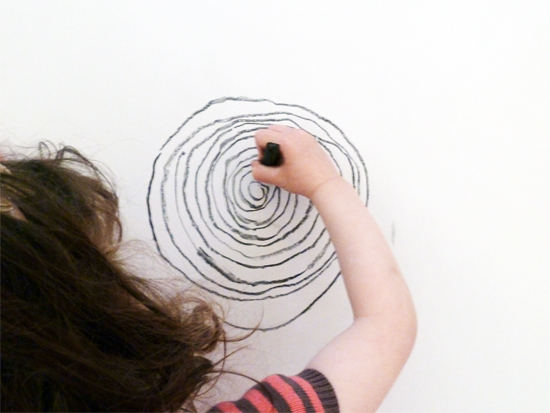

“To paint a line for a minute and walk with it was something I had never done before, and it made me think a lot about how good simple things can be.” Chris Ofili

Teaching Notes
Find the MTP for this pathway here.
See the recording of the hour long zoom CPD to introduce teachers to this pathway.
Curriculum Links
Science: Uses language to support understanding of concepts of growth, human body and natural forms.
Maths: Explores pattern, symmetry.
PSHE: Peer discussion, collaboration
I Can…
-
I can draw from my finger tips, my wrist, my elbow, my shoulder, my body.
-
I can make a drawing using a continuous line for a minute or two.
-
I have made a sketchbook (or perhaps decorated the cover of a bought sketchbook) and I feel like it belongs to me.
-
I can draw from observation for a few minutes at a time.
-
I can make different marks with different drawing tools. I have seen the different marks I can make with a soft pencil, a graphite stick and a handwriting pen.
-
I have explored how water affects the graphite and pen, and explored how I can use a brush to make new marks.
-
I can make choices about which colours I’d like to use in my drawing.
-
I have seen the work of an artist and listened to how the artist made the work. I have been able to share how I feel about the work.
-
I can talk about what I like in my drawings, and what I’d like to try again.
-
I can take photos of my artwork.
Time
This pathway takes 6 weeks, with an hour per week. Shorten or lengthen the suggested pathway according to time and experience. Follow the stages in green for a shorter pathway or less complex journey.
Materials
A2 newsprint, A2 cartridge or black paper, sugar paper (torn into squares), soft pencils, graphite sticks, chalk, handwriting pens, or graphite, sticks, coloured card, cardboard, recycled/scrap paper, elastic bands.
See the Pathway Used in Schools...
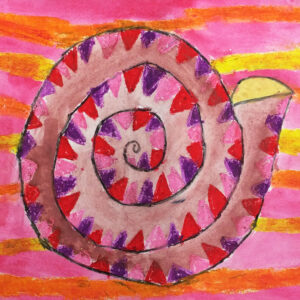
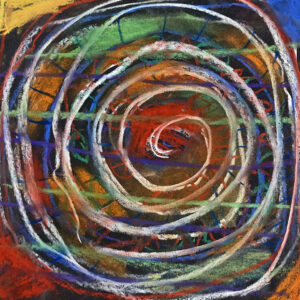
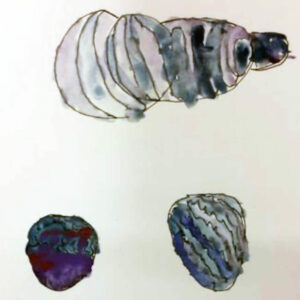
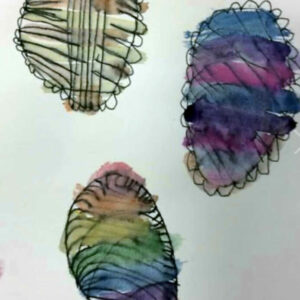

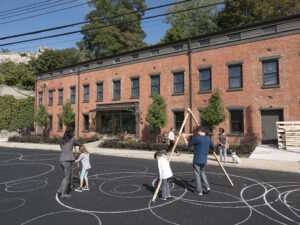

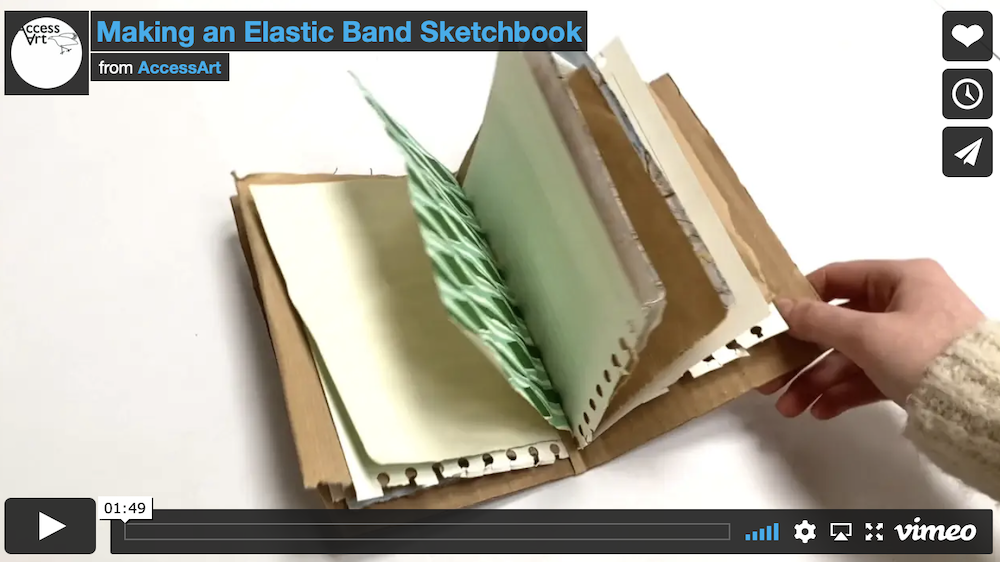 It’s important that children feel a sense of ownership with their sketchbooks. Invite children to
It’s important that children feel a sense of ownership with their sketchbooks. Invite children to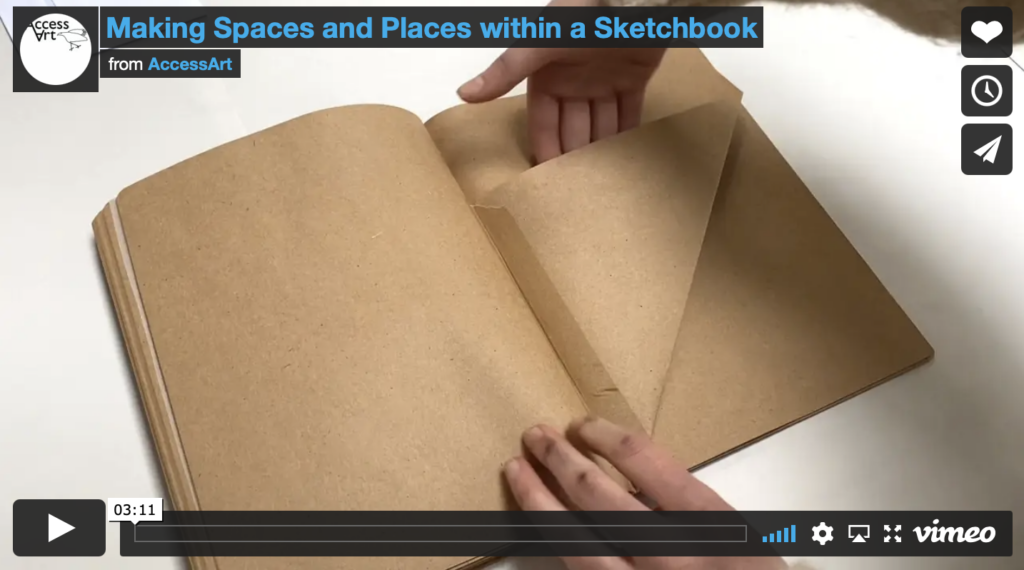 “
“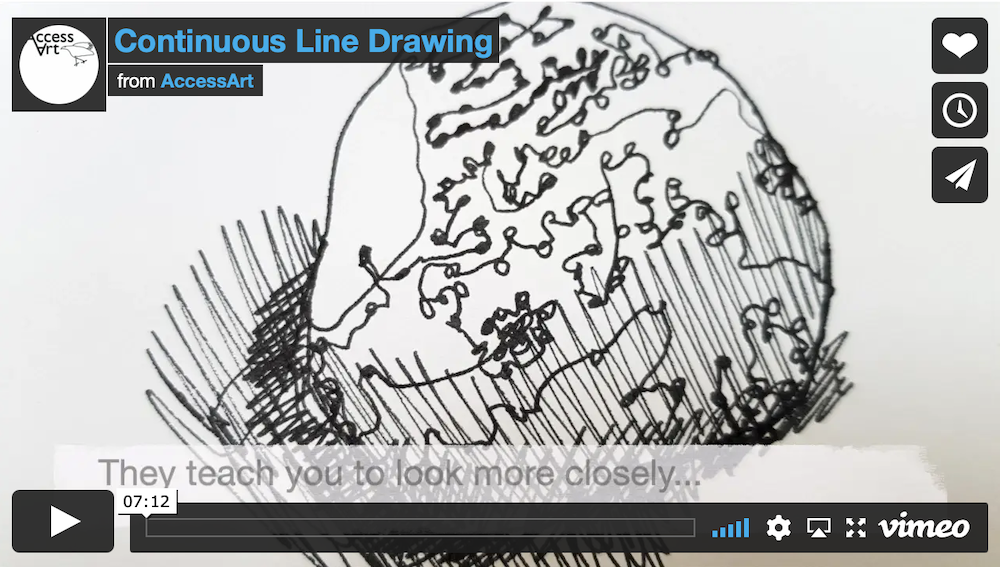 Start the session by creating a calm meditative environment. Use this exercise to create “
Start the session by creating a calm meditative environment. Use this exercise to create “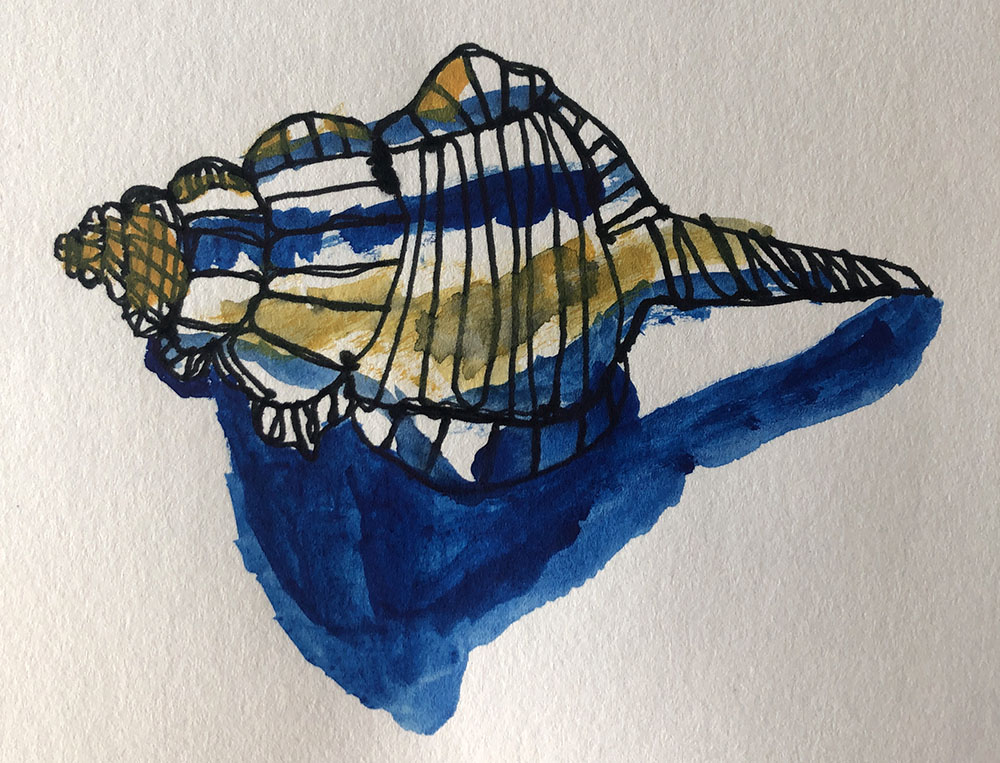 Adapt this resource and experiment with “
Adapt this resource and experiment with “
